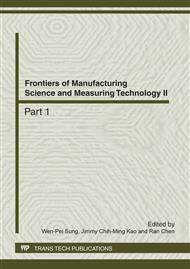p.346
p.350
p.354
p.358
p.363
p.367
p.370
p.374
p.378
Stress Analysis in Ceramic Inlays Restored Premolars
Abstract:
Ceramic inlays can be used on premolars requiring a MOD restoration instead posterior composite resins direct restorations and offer a durable alternative. Because it is known that MOD inlays may increase the susceptibility to fracture, it is important to ensure optimal performance in selection of the adequate preparation design to reduce stresses in teeth structures and also in the restorations. The aim of the study was to determine, using finite element analysis, the optimal shapes of ceramics MOD inlays in premolars in order to minimize the potentially damaging effects of stress on teeth structures and restorations. The study was performed on an upper first premolar, using a finite element analysis. 3D models of maxillary first premolars, prepared for MOD inlays with different tapers were generated. The mesh structure of the solid 3D model was created using the computational simulation of Ansys finite element analysis software. An occlusal load of 200 N was conducted, and stresses occurring in the ceramic inlays, and teeth structures were calculated. The study provides a biomechanical explanation for inlays restored teeth. MOD inlays transfer functional stress to the teeth structures. The taper of the preparations had no significant influence on the stress values for all the studied cases.
Info:
Periodical:
Pages:
363-366
Citation:
Online since:
April 2012
Authors:
Price:
Сopyright:
© 2012 Trans Tech Publications Ltd. All Rights Reserved
Share:
Citation:


